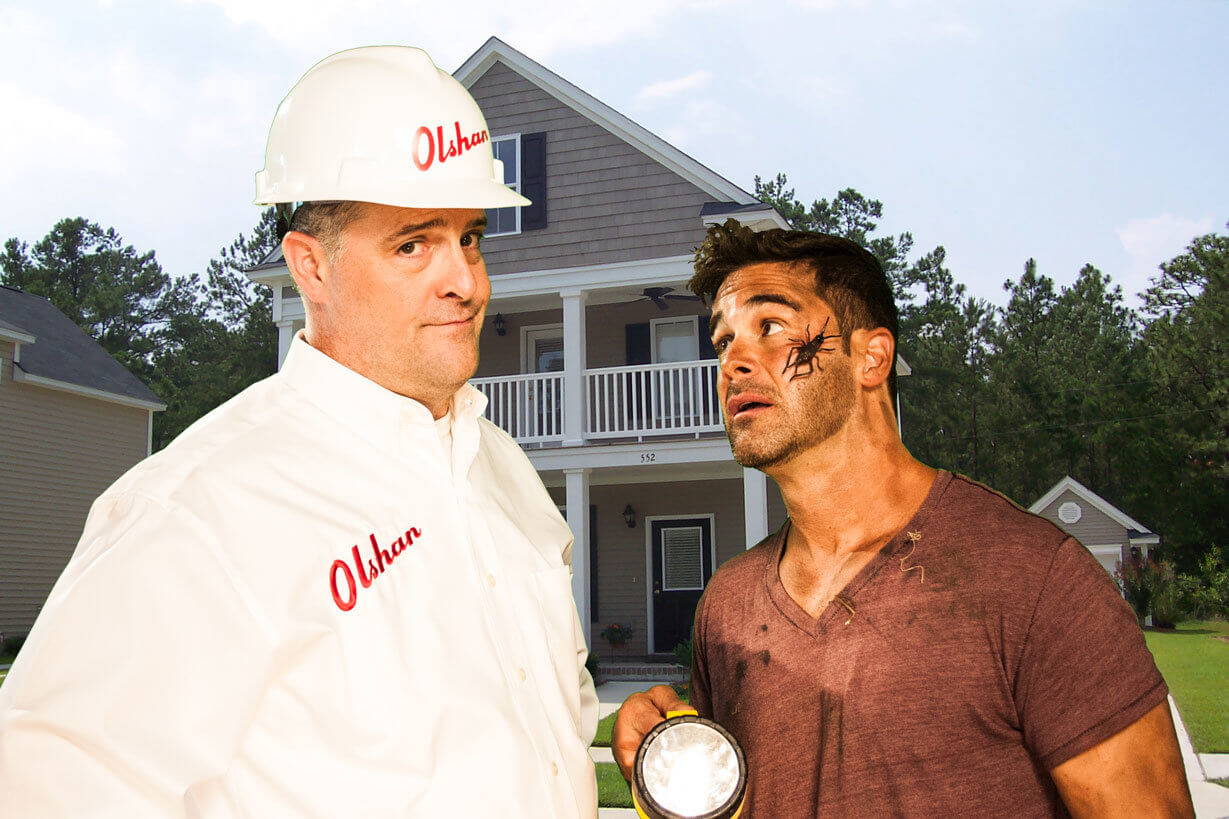
Those problems would have been a lot cheaper to fix a year ago…
The 10 Biggest Consequences of Postponing Foundation Repair
If you’re like most homeowners, you’re not a fan of unexpected surprises that can stretch your budget. Unfortunately, no matter how careful you are, unexpected expenses come with the territory of being a homeowner. Foundation problems certainly fall into that category, and they also often qualify as one of the more expensive home repairs you can do.
What Causes a Home’s Foundation to Deteriorate?
When your home is built on clay-heavy soils that expand or contract as it absorbs or loses moisture, this process will cause your foundation to either heave or sag, putting it under so much stress that it can eventually start to crack, losing its strength and structural integrity over time.
Here are a few telltale indicators of a foundation under duress:
- Cracks in walls, either upstairs or downstairs, inside or outside
- Doors and windows that stick or won’t close properly
- Sagging/sinking floors
- Signs of moisture penetration anywhere in the basement or crawl space
- Unpleasant odors wafting up from below
- Mold, mildew or insect infestations
- Basement draftiness or cold spots
In the event of structural damage, repairs should not be ignored, but you may be tempted to postpone taking action since early-stage foundation problems may seem more like inconveniences than indicators of a crisis.
This is a mistake that many homeowners make, but procrastinating on foundation repairs will cause you bigger trouble in the long run—big, as in expensive. Possibly several thousand dollars more costly if ongoing structural damage continues to worsen, damaging pipes, flooring and other areas.
The Ten Worst Things that can Happen if You Ignore Signs of Foundation Problems
Ignore an emerging foundation problem and here’s what you can expect…
1. Continuously escalating repair costs.
If your refrigerator or vacuum cleaner is broken, you can have it fixed at any time without extra penalty. But the slow decay of a home’s foundation is a progressive process that will only get worse the longer it is left unaddressed.
If you neglect a developing foundation problem for a few days, weeks or even months, you can recover, but you might miss an important opportunity to start an affordable, DIY preventive maintenance program to correct the problem. But if you wait a year or more, you may end up with higher repair bills that. If you deal with an emerging foundation problem immediately, at the very first sign of trouble, the remediation costs may be shockingly low.
2. Spreading structural damage.
Foundations are just that, foundational. When a foundation is weakened it causes a domino effect, putting excessive stress and strain on the structure it was designed to support.
Walls, floors, ceilings, wooden cross beams, upstairs walls, doors, window frames, attached garages… seemingly all elements can be affected by an unsteady foundation, and there is no telling how extensive the structural damage may be if structural degradation is allowed to progress indefinitely
3. Water damage.
Wooden structural features in a home are especially vulnerable to water damage, which is almost guaranteed once cracks and crevices begin to appear in basement walls and foundation slabs, or when crawl spaces become contaminated by water. If you use your basement for storage or living space, anything you keep there may be at risk if water is allowed to seep-in undeterred.
Crumbling and cracking in a foundation can result in moisture penetration and the longer it goes on the greater the likelihood of significant water damage occurring.
4. Plumbing nightmares galore.
Water pipes below the foundation are particularly vulnerable to breakage, as a result of subsoil expansion or contraction that lifts, drops and dislocates the concrete slab. These problems can be difficult to correctly diagnose without a professional evaluation, and under-slab pipes are often expensive to fix since they aren’t always easy to access.
Above-ground water pipes that run through walls and beneath floors can also be damaged when foundations shift, since movement down below can cause structural displacement throughout the house.
5. Nasty insect infestations.
Creepy-crawlies seek out sheltered, humid environments to nest and breed, which explains why undesirable insects are drawn to dark, dank, damp basements and crawl spaces.
Unfortunately, termites, carpenter ants, mosquitoes, silverfish, spiders and others of their ilk are more disgusting and destructive than moths, especially if they migrate from the crawl space to upper levels. And if an infestation does occur you’ll likely incur exterminator fees in addition to your foundation repair costs.
6. Mold and mildew invasion.
Insects crave the dank darkness, but mold and mildew are even more fond of wet subterranean conditions. Like insects, these fungal interlopers can cause lasting physical damage, but that is only the beginning.
According to the EPA, as household contaminants, some mold and mildew spores can set off allergy and asthma attacks that will leave you and your family scratching, sneezing, wheezing, coughing and feeling sick and miserable. Once it gains a foothold, mold and mildew can spread, and if you have basement or crawl space moisture issues these microbial scum are likely to prosper.
7. Increased utility bills.
Most homes are constructed to be at least somewhat airtight, and the addition of insulation and weather stripping can bridge the remaining gap, but a foundation damaged by hydrostatic pressure or expansive clay soils can transfer excess moisture upward into the living areas above, causing cracks, crevices, warps and sudden separations to appear in structural features. As humid air is pulled upward from your crawl space or basement, your air conditioner may have to work harder to keep indoor temperatures comfortable. This can result in higher utility bills.
8. Lost opportunities for do-it-yourself solutions.
In a lot of instances excessive water in the soil surrounding your home is the reason for foundation damage, and if the problem is diagnosed early enough you may be able to fix the problem yourself with minimal outside assistance.
For example, drainage problems (a common cause of underground soil saturation) can often be addressed by adding length to existing gutters or rearranging downspouts to empty in different locations, redirecting water flow away from the home. Or you can install your own French drain, a popular DIY water diversion project. But you’ll need to know there’s a problem before you proceed with such a project, and that’s what a professional evaluation of your foundation and property can uncover.
9. A decline in property value.
If you have a foundation that is failing it could cost a new owner several thousand to repair it, and before your sales transaction is complete a third-party home inspection will reveal the existence of such an issue.
Do you think anyone will be interested in buying your home once at market value after a home inspection has revealed foundation damage?
10. Long waiting times for service from foundation repair contractors.
One great thing about early-stage repairs is that you can arrange them before foundation damage and its side effects get completely out of hand. During periods of drought, foundation companies are often booked out for several weeks.
Taking care of the problem early helps you beat the rush and gives you flexibility when scheduling an appointment.
Your Biggest Money Saver? Preventive Maintenance
The early bird catches the worm, and an ounce of prevention is worth a pound of cure.
These two sayings have slightly different meanings, but both apply when the subject is structural evaluation for foundation damage.
Yes, you could wait until the severe signs of trouble appear to have your foundation evaluated, but why take that chance?
The most efficient way to protect your foundation is to have it evaluated by a professional at the first hint of trouble. The cost of a preventive evaluation is normally very reasonable (we offer it for free at Olshan) and a trained foundation expert can detect problems at the earliest possible stage, sometimes before damage is visible to the naked eye.
Foundation problems won’t get better on their own, but you may be able to take corrective action before it gets worse if you make it a priority.

